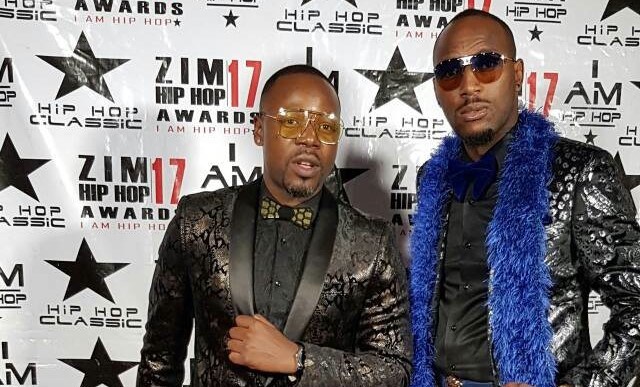The genre, which is characterised by rap, graffiti, beat-boxing and break dancing, has spread around the world, with some African hip-hop artistes also shining on the global stage, but the case is different when it comes to hip-hop in Zimbabwe.
Over the past decades, hip-hop in Zimbabwe has been likened to that of the US. Most people gave it a blind eye and, in some instances, preferred what they believe to be the original hip-hop from the US and consequently left local artistes without exposure. For example, local hip-hop artiste, Takura, only came to fame in 2016, three years after launching his career with Soul Afrika.
It seems many people have not been exposed to the hip-hop culture in Zimbabwe or they simply do not understand its roots, limiting its reach to only a few and somewhat elite.
The genre has lately been associated with ‘cool kids’ or those from the uptown, while those in the ghetto have tended to gravitate towards Zimdancehall.
In comparison to Zimdancehall — which is produced in backyard studios in urban and peri-urban areas — making it accessible to all, hip-hop is not that easily available on the market. Unlike, hip-hop, Zimdancehall artistes mainly push their music on WhatsApp messenger, which is an easy, accessible and affordable platform for millions of Zimbabweans.
Hip-hop artistes, on the other hand, mainly use popular music websites like SoundCloud and Data File Host to market their music. These are not easily accessible sites to many because they would need Wi-Fi or a strong data connection, which is unaffordable for a general Zimbabwean music fan who relies mainly on promotions on social media bundles.
The production of hip-hop is also more expensive and the final product is usually of high quality. This has also led to the genre attracting fewer artistes than Zimdancehall, which has become every aspiring musician’s soft-landing pad. When producing a hip-hop song, an artiste would require their own instrumentals, which they would have to create or hire from a producer.
For Zimdancehall artistes it is, however, much cheaper because several artistes can ride on a pre-produced riddim and, therefore, pay less to use it.
However, besides the genre being an underdog in Zimbabwe, it appears promoters have not been giving it a chance and enough attention to market the artistes and have them perform at popular shows.
Music promoters are businesspeople and are primarily there to make profits and, therefore, choose to work with artistes that command a huge following in order to maximise on returns. This leaves hip-hop artistes on the sidelines.
With Zimdancehall dominating, there are only a few hip-hop artistes who have managed to steal the limelight, but this has been out of a long and protracted journey to the top.
Artistes like ExQ and Stunner, who have been in the music industry for more than a decade now, are some of the names that pop up whenever ordinary people talk about hip-hop in Zimbabwe.
Interestingly, the duo started their musical careers in the early 2000s during the era of urban grooves, which was some kind of a blanket term for several music genres, including RnB, hip hop, reggae, dancehall and Afro pop.
During that time, there were so many collaborations among artistes with different talents and contributions, until such a time individuals chose their specific genre. Stunner and ExQ became some of the first to be fully recognised in hip-hop.
The journey was not easy as at some point many were left behind and both Stunner and ExQ almost went into oblivion, only to make some comebacks through powerful collaborations.
While it is clear that hip-hop does not yet have a strong fan base, it cannot be ignored in light of recent events in Zimbabwe. South African artistes, Nasty C and Shekhinah, drew huge crowds at their maiden shows in Zimbabwe and that proved the genre has the potential to dominate if all stakeholders hit the right notes.
Fans at the Nasty C and Shekhinah shows paid at least $15 and $10 respectively to enter the venue while $5 is often the standard for Zimdancehall show entrance. In addition, the crowds also sang along to the artistes’ songs word for word, showing that hip-hop is followed in the country. The rise of artistes like Takura and Asaph has also added to the interest in local hip-hop.
Takura, who has been many people’s favourite for some time now, has released a string of hit songs accompanied by stellar videos thus attracting even fans from the dancehall fraternity. The blend of English and vernacular in his songs has also given his music a cutting edge.
Bulawayo’s Asaph is also another young hip-hop artiste who has pushed the genre to greater heights. His latest single, Mambo, has sat on the number one spot on ZiFM’s GTel Top 40 charts over the last six or so weeks, surpassing artistes like Winky D and Jah Prayzah, something that is very unusual for a hip-hop song or artiste.
This demonstrates that hip-hop has a chance of competing with dancehall if every stakeholder plays their part. Radio DJs should not play hip-hop music simply because it is a hip-hop slot. Promoters should also give hip-hop artistes a fighting chance. The artistes, too, should ensure their music resonates with many people and make it accessible to all those who want it.
With enough participation of stakeholders involved in the showbiz industry, I believe Zimbabwean hip-hop artistes can take their acts on international platforms. - NewsDay




